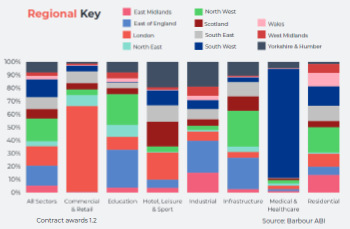Amberfield land
On 15 September 2014, the Royal Institution of Chartered Surveyors (RICS) published 'Property in Politics', a report which it claimed set out a bold new vision for the property market. The report followed the largest ever consultation carried out by the RICS.
One of the key recommendations of the report was that a new land classification should be created, ‘amberfield land’, which would identify ‘ready to go land’. It suggested that creating a pipeline of ready-to-go amberfield land would increase the supply of housing and create new development opportunities.
Amberfield land would be an addition to the existing classifications of:
- Greenbelt or ‘greenfield land’ – which establishes a buffer zone between urban and rural land, and
- ‘Brownfield land’ – defined in Planning Policy Statement 3 (PPS3) in 2010 as ‘previously-developed land…which is or was occupied by a permanent structure...’
There have been various attempts to introduce policies to encourage new development on brownfield land and to protect the green belt. However, brownfield sites can be difficult to develop, and in an interview on BBC2’s Newsnight in November 2012, planning minister Nick Boles, suggested that more than 388,000 hectares of open countryside would have to be built on to meet housing demand.
The RICS suggested that "both classifications block or slow development and local growth is being impeded by extensive battles to bring forward land".
The new amberfield classification would create better certainty, reduce costs, encourage infrastructure investment and allow faster development of new homes. Re-designating land as amberfield would allow local authorities to showcase sites that are ready to go, and attract inward investment.
The RICS proposed that local authorities and local communities work together to include a set quota of amberfield land in local plans that would be ready to be developed for housing. It suggested in the announcement of the report that this quota should be between 30% and 50% (although it is not clear what this represented) but that it would be adjusted through a process of open consultation to meet the needs of the local area. The RICS also proposed that amberfield sites would have to be developed within five years, and so local authorities would have to approve planning consent within a set time frame, or risk being classed as ‘failing’.
In August 2020, RICS reiterated its call for an amberfield land classification. Hew Edgar, RICS head of government relations, said: “RICS’ past suggestion of a new land classification of Amberfield is ready to go land, identified by local authorities and communities as favourable for development in line with local needs. It would reduce costs for developers including local authorities and enable SMEs and self/custom builders to generate homes at speed." Ref https://www.rics.org/uk/news-insight/latest-news/press/press-releases/rics-recommends-government-looks-at-long-term-improvements-to-housing-market/
[edit] Related articles on Designing Buildings Wiki
- Allotments.
- Areas of Outstanding Natural Beauty.
- Brownfield land.
- Brownfield registers.
- Contaminated land.
- Demolition.
- Designated sites.
- Green belt.
- Green belt planning practice guidance.
- Greenfield land.
- Green roof.
- Local Enterprise Partnership.
- Local plan.
- Masterplanning.
- National planning policy framework.
- Pink zones.
- Types of land.
- Windfall site.
[edit] External references
- RICS, Amberfield - key to unlock housing shortage. 15 September 2014.
Featured articles and news
Confirming previously announced funding, and welfare changes amid adjusted growth forecast.
Scottish Government responds to Grenfell report
As fund for unsafe cladding assessments is launched.
CLC and BSR process map for HRB approvals
One of the initial outputs of their weekly BSR meetings.
Architects Academy at an insulation manufacturing facility
Programme of technical engagement for aspiring designers.
Building Safety Levy technical consultation response
Details of the planned levy now due in 2026.
Great British Energy install solar on school and NHS sites
200 schools and 200 NHS sites to get solar systems, as first project of the newly formed government initiative.
600 million for 60,000 more skilled construction workers
Announced by Treasury ahead of the Spring Statement.
The restoration of the novelist’s birthplace in Eastwood.
Life Critical Fire Safety External Wall System LCFS EWS
Breaking down what is meant by this now often used term.
PAC report on the Remediation of Dangerous Cladding
Recommendations on workforce, transparency, support, insurance, funding, fraud and mismanagement.
New towns, expanded settlements and housing delivery
Modular inquiry asks if new towns and expanded settlements are an effective means of delivering housing.
Building Engineering Business Survey Q1 2025
Survey shows growth remains flat as skill shortages and volatile pricing persist.
Construction contract awards remain buoyant
Infrastructure up but residential struggles.
Warm Homes Plan and existing energy bill support policies
Breaking down what existing policies are and what they do.
A dynamic brand built for impact stitched into BSRIA’s building fabric.





















